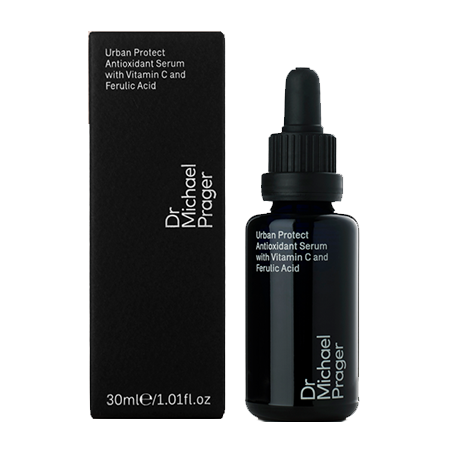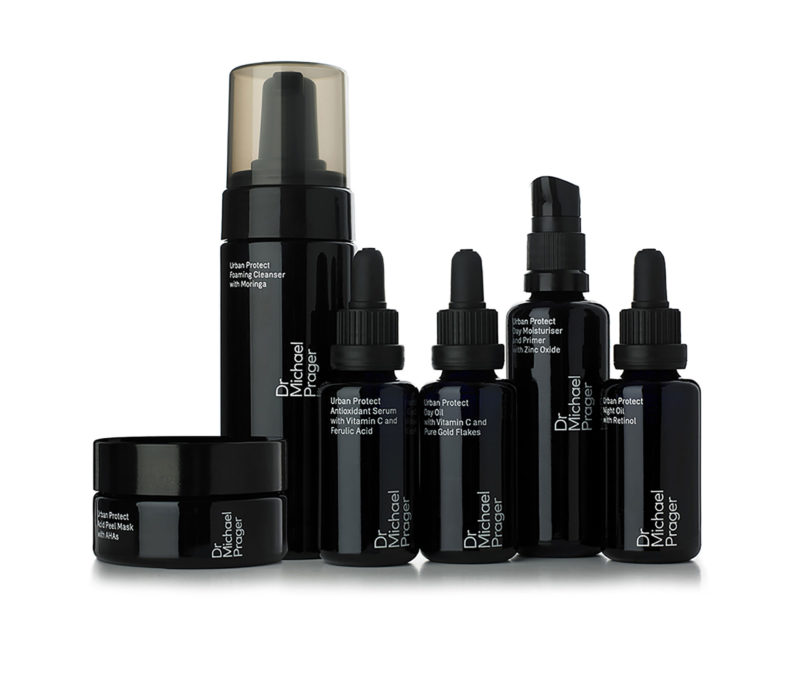The skincare industry is an environmental disaster zone with the biggest problem caused by packaging.
Cosmetic pots, dispensers and boxes annually contribute to 120 billion pieces of packaging, of which 95% is discarded rather than recycled – and much of that is plastic.
This should be a huge concern to us all, and it’s the reason why we are now inviting clients to fill their own bottles with Dr Michael’s skincare products exclusively at The Prager Clinic.
It’s a small start, but it’s a start, and that’s not all we’re doing.
Many over-the-counter skincare creams contain microplastics – tiny plastic particles used for their texture-enhancing properties or as fillers. The problem is they’re not biodegradable. So, once they are washed down the plughole, they cause all manner of environmental complications including detrimental affects on 633 marine species.
There are no microplastics in Prager Skincare products.
In other news, 70% of beauty products contain palm oil, another threat to wildlife because palm oil is a huge contributor to deforestation.
There is no palm oil in Prager Skincare products.
Furthermore, our products are not tested on animals and they have always been vegan (something the Body Shop has only recently managed to do.)
If you’re unsure as to whether your skincare products contain microplastics, check ingredient lists for polyethylene (PE), polypropylene (PP), polyethylene terephthalate (PET), polymethyl methacrylate (PMMA), and nylon.
While you’re doing that, ask yourself are these creams actually doing anything for you. In my experience, the short answer is ‘no.’ The longer answer is ‘next to nothing.’
YOUR SKIN EXPLAINED
When you apply a topical cream to your skin, you are often led to believe that it is going to somehow reach the depths at which collagen can be boosted and cells repaired. Well, to understand whether that’s feasible, let’s look at the layers of your skin more closely.
Outer Layer (Epidermis)
This is the protective barrier; a shield against the outside world, guarding against environmental damage such as UV rays and pollution. The epidermis is relatively thin, but tough, and it’s constantly renewing itself. Dead skin cells shed from the top, while new cells rise from below.
Middle Layer (Dermis)
Just beneath the epidermis is a thicker layer called the dermis. This is where you find fibroblasts, the tiny factories that produce collagen and elastin – the proteins that give your skin strength and elasticity. This layer also contains blood vessels, nerves, and hair follicles.
Base Layer (Basal Layer of the Epidermis and Dermis Junction)
At the very bottom of the epidermis and extending into the top of the dermis, we find the stem cells, which are crucial for repairing and renewing the skin.
THE PARTS THAT TOPICAL CREAMS CAN AND CANNOT REACH
The ability of your over-the-counter creams to penetrate the skin varies depending on the specific formulation and ingredients, but here is a rough guide to what happens:
Stratum Corneum (Outermost Layer of the Epidermis): most topical creams can easily reach this layer.
Epidermis (Beneath the Stratum Corneum): certain smaller molecules in skincare products, such as forms of vitamin C or retinoids, can penetrate deeper into the epidermis.
Dermis: most topical creams cannot penetrate deep enough to reach the dermis effectively, the very place where collagen and elastin fibres are located.
Beyond the Dermis: this is a no-go area for topical creams, they simply cannot reach the depths of subcutaneous tissue. This is why injectables have a job to do.
The simple truth is, the skin’s primary function is to act as a barrier, so it naturally resists penetration – and that includes to your overly-priced, microplastic-laden over-the-counter anti-ageing creams, no matter how many rainforest ingredients they put in there. Now, a product with vitamin C in the right quantity and quality, well, that’s some kind of amazing. But don’t take my word for it.
KEY INGREDIENTS FOR SUCCESSFUL SKIN LONGEVITY

The renowned dermatologist, Sheldon Pinnell, was known as the “founding father of topical antioxidants.” During his career, the Yale medical graduate, wrote a number of papers looking at how vitamin C acts in collagen biosynthesis. He was also one of the first scientists to patent a stable form of vitamin C proven to penetrate the skin.
In a 2008 report published in The Journal of Cosmetic Dermatology, Sheldon and a number of colleagues assessed topical creams in relation to sun damage and premature ageing. To briefly explain, Ultraviolet (UV) light increases harmful molecules called ‘reactive oxygen species’ in our skin. These molecules damage parts of our cells, such as lipids, proteins, and DNA, all of which leads to skin damage.
Although our skin naturally fights these harmful molecules with a defence system of antioxidants, as we get older these antioxidants run out, leaving us more vulnerable to UV damage. That’s why applying antioxidants topically will supplement our skin’s defences against UV light.
Initially, a formula containing L-ascorbic acid (a form of vitamin C) was developed. Adding α-tocopherol (vitamin E) to this formula improved its stability and protective effects against UV light. Further research showed that adding ferulic acid, a plant-based antioxidant, not only stabilised the formula, but enhanced its protective qualities.
The research included a detailed study whereby a solution containing these antioxidants was applied to people with promising results; it effectively prevented DNA damage (thymine dimers), which is a significant cause of non-melanoma skin cancers. It also inhibited enzymes that break down skin tissue and contribute to aging. Furthermore, it helped maintain the function of Langerhans cells, which are part of the skin’s immune response.
To read the full report, click here.
THE DR MICHAEL PRAGER SKINCARE RANGE
The Prager Urban Protect skincare range is designed to protect, repair and restore the skin, which is constantly under attack from environmental aggressors, such as air pollution, UV rays, and blue light. These are the factors that contribute to premature ageing and other skin issues.
When you buy a Prager skincare product, you are guaranteed:
- Antioxidant-rich products that neutralise free radicals caused by pollution and UV exposure;
- Strengthened skin barrier protection to defend against pollutants and prevent moisture loss;
- Anti-ageing benefits with products designed to address common signs of aging, like fine lines, wrinkles, and loss of elasticity;
- Hydration and nourishment, the two key ingredients needed to maintain a healthy, radiant complexion;
- Innovative ingredients and technology aimed at maximising efficacy against environmental damage.
By offering refill options on all of our products at The Prager Clinic we have also lessened our own environmental impact.
Choose change – choose beauty with a conscience – choose Prager.
